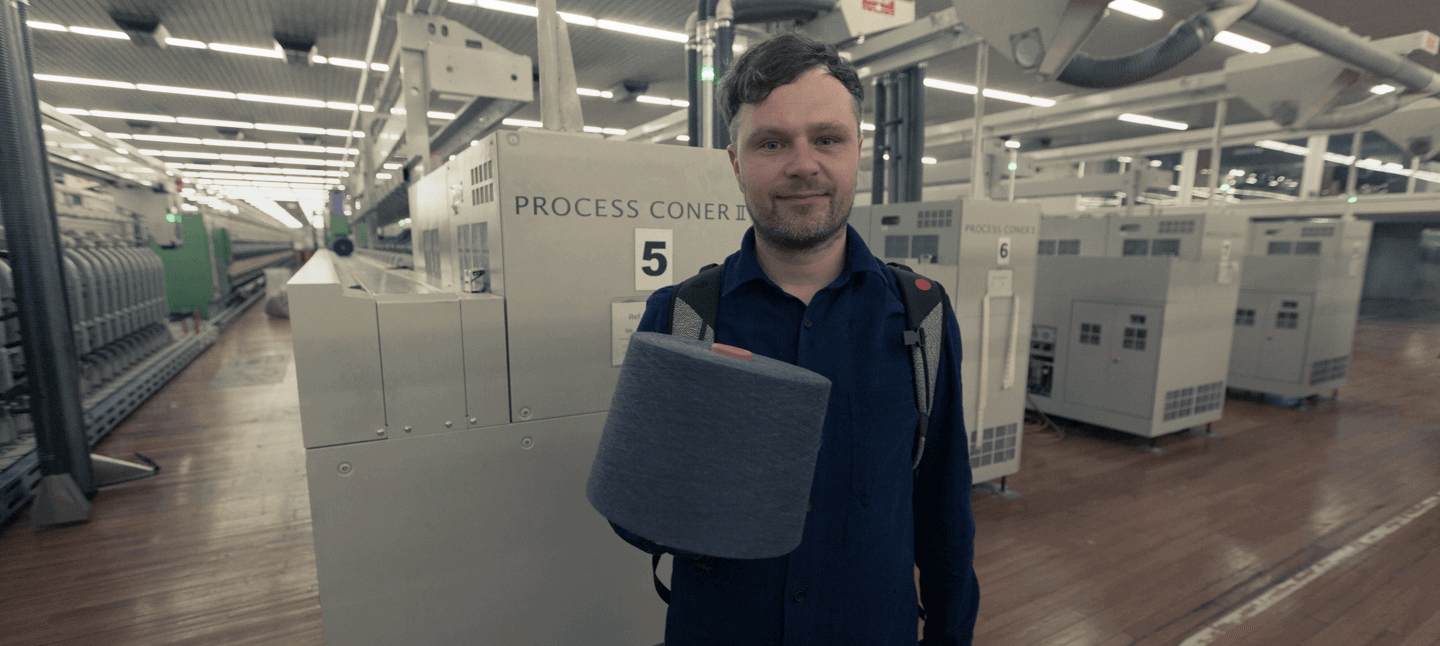Fabric manufacturing
The spinning
Spinning, like weaving, is one of humanity's oldest (cultural) techniques. Over the years, the processes gradually refined and successive new thread-making techniques emerged. The product of spinning is called yarn. The most important characteristics of a spun yarn are, in addition to the fiber being used, the weight per length (yarn count) and the strength (reference elongation/breaking strength). We at Lebenskleidung use only high quality combed ring and compact yarns.
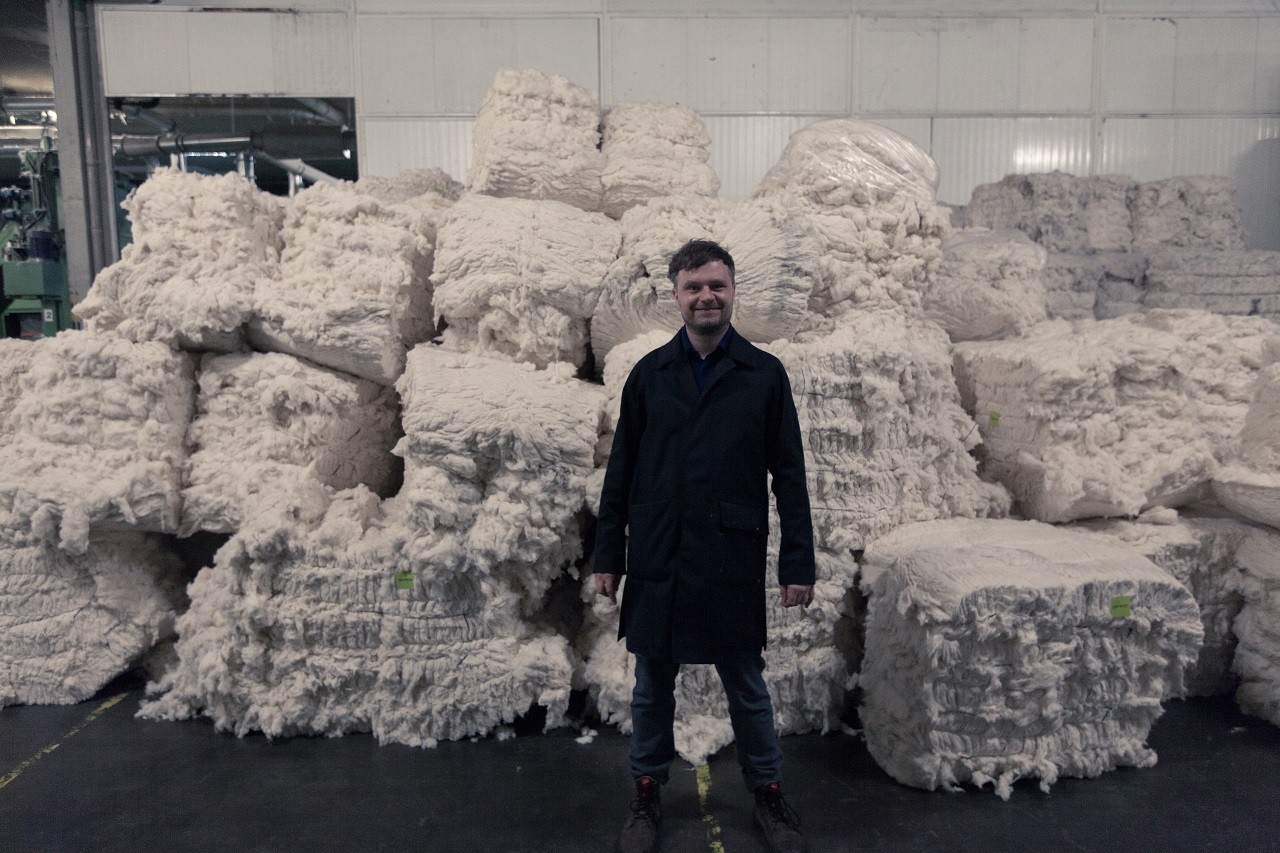
The organic cotton for the spinning
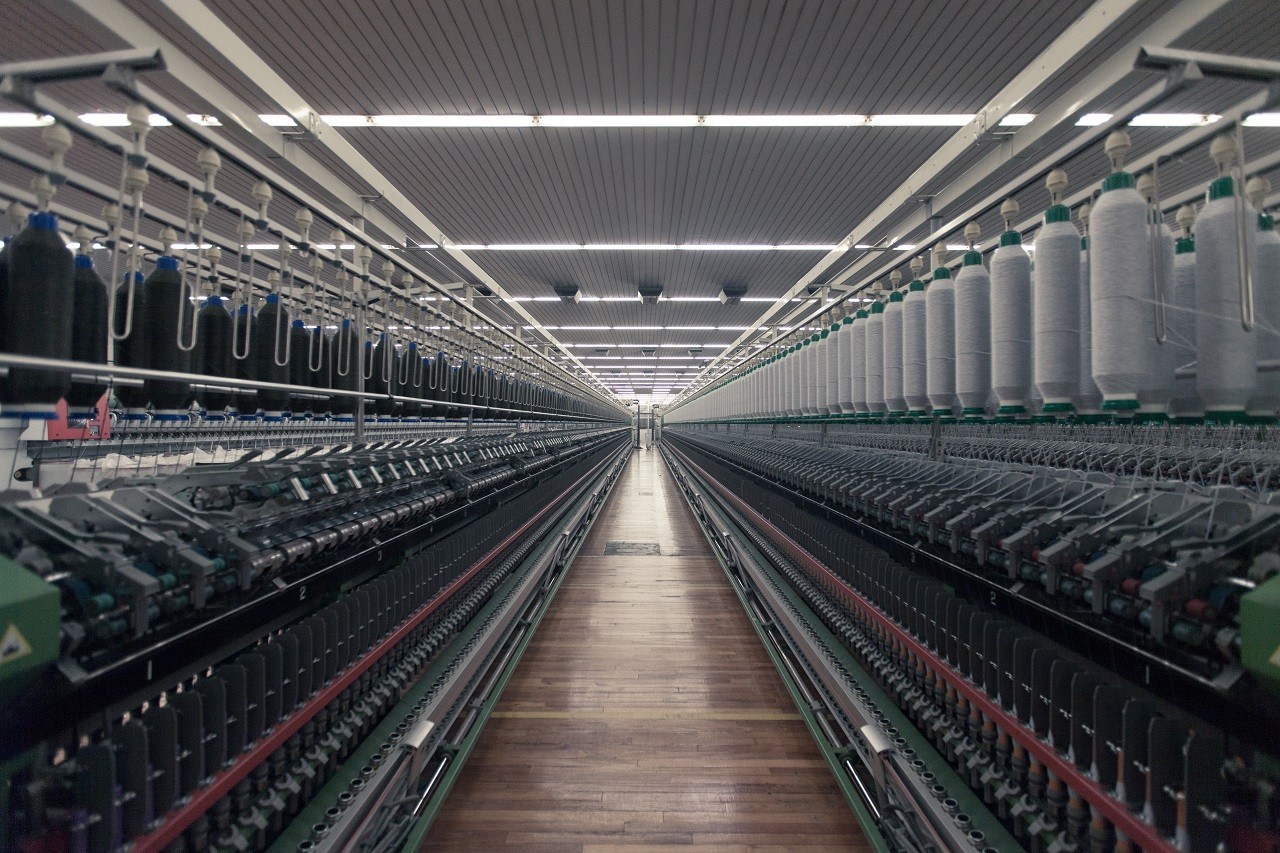
The spinning machine
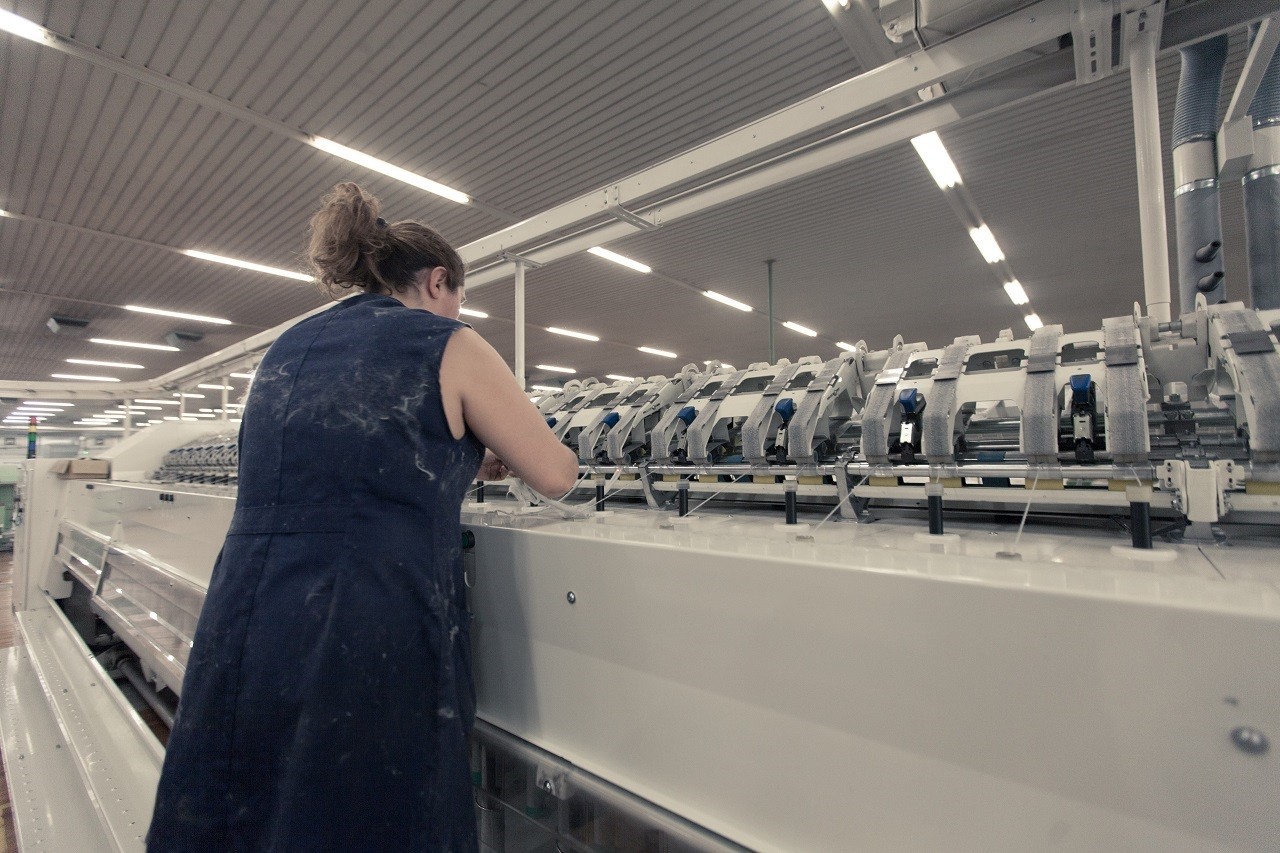
The spinning machine being checked
The knitting and weaving
The knitting or weaving is the step in which the yarn becomes a textile. Circular knitting machines, which are used in our fabrics, are characterized by the fact that blanks and needles are arranged in a circle. Our yarns are first inserted into the so-called latch needle, which is then closed so that the thread can be transported through the stitch. The board ensures that the finished stitches are kept level – and all this happens with multiple threads at the same time.
When weaving, as one may still remember from the simplest looms, two thread systems are crossed at right angles. The tensioned threads are called warp threads, the through-shooting threads weft threads. It is true that the way in which the yarns are crossed and which properties they have, also determines the manner in which the finished fabric is made.
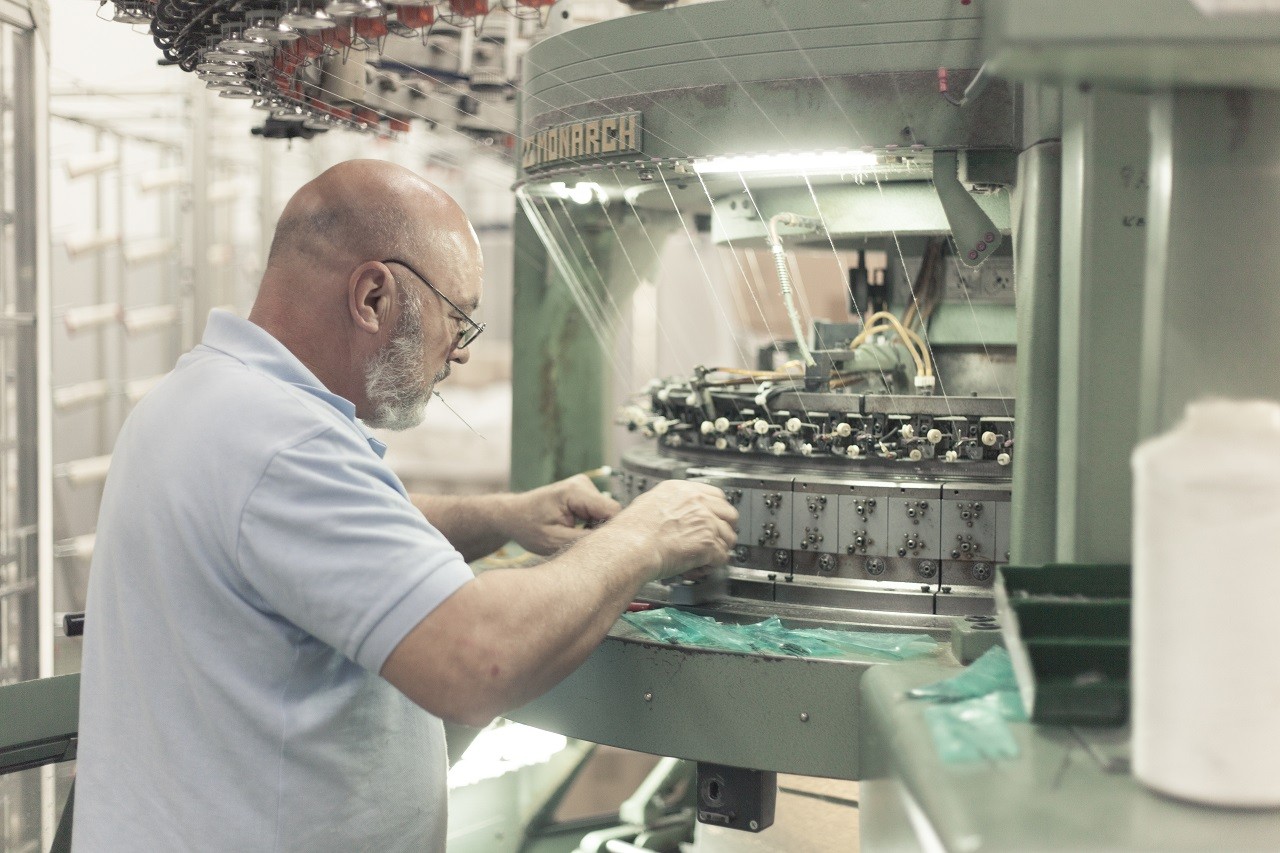
Knitting a fabric is a craft
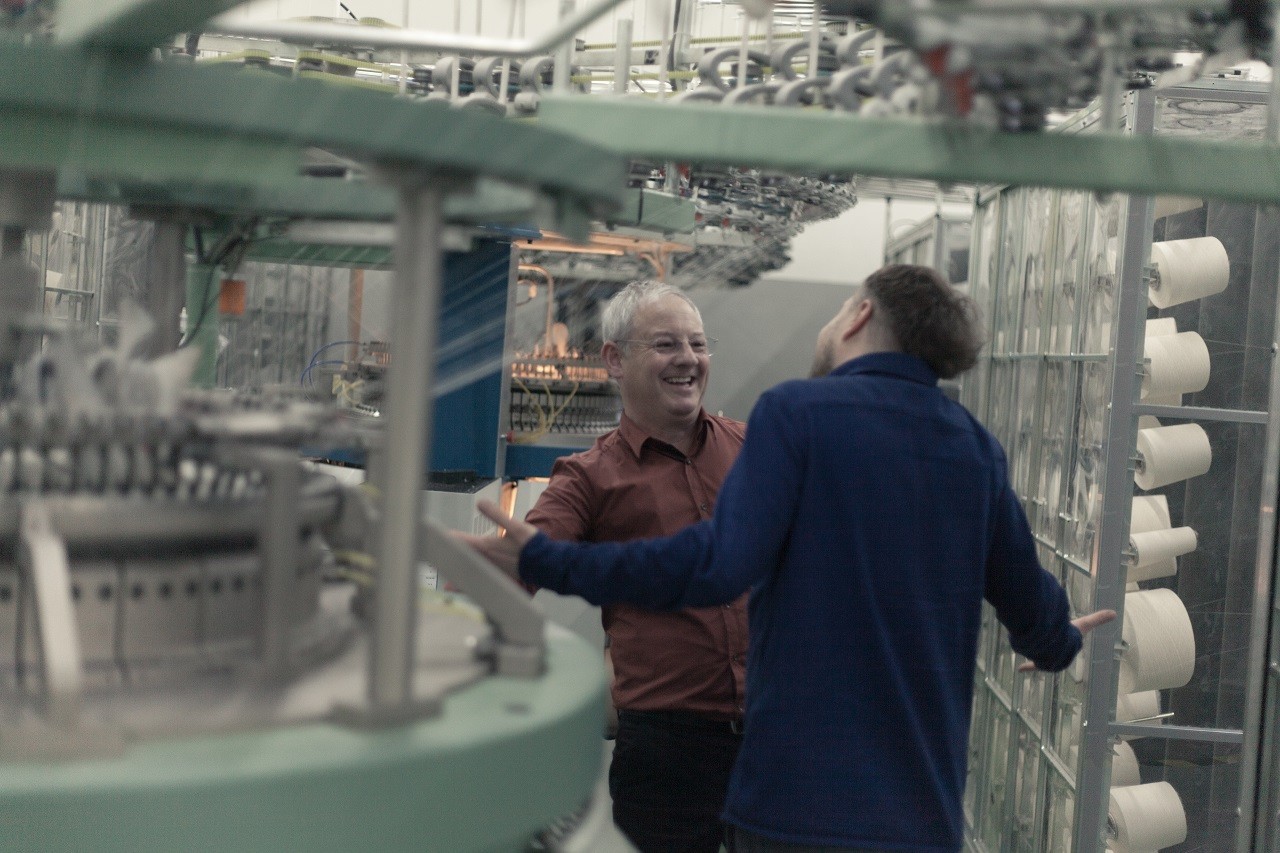
We are proud of the good relationship to our knitters
Of course we should not miss the fun
The textile finishing
The textile finishing includes all the steps that follow the creation of the textile. These include pretreatments such as mercerization or shrinking, but also coloring processes and finally the finishing. Of course, all of these steps are done according to the strict guidelines of the Global Organic Textile Standard (GOTS).
The fabric being made ready for the finishing
The fabric gets pre-shrunk
In such loaders the fabric gets dyed
SOME IMPRESSIONS FROM OUR PRODUCTION IN PORTUGAL
The quality control
Qualitycontrol is one of the most important steps before a fabric can make its way to you. On a light table, the goods are checked meter by meter for errors, which are then documented. It is also measured and graded. Laboratory tests, which give us and you the assurance that the fabric does not exceed certain specified limits, are part of a thorough physical check. These are carried out by independent laboratories.
Internal quality control in our warehouse in Wilsum/Germany
In our external warehouse in Wilsum/Germany, the fabrics are checked again for their quality, cut to size and relined before embarking on their journey to you.

The fabrics are being checked on a light-table
According to the order the fabric gets cut
Fabric by the meter gets doubled on cardboards

